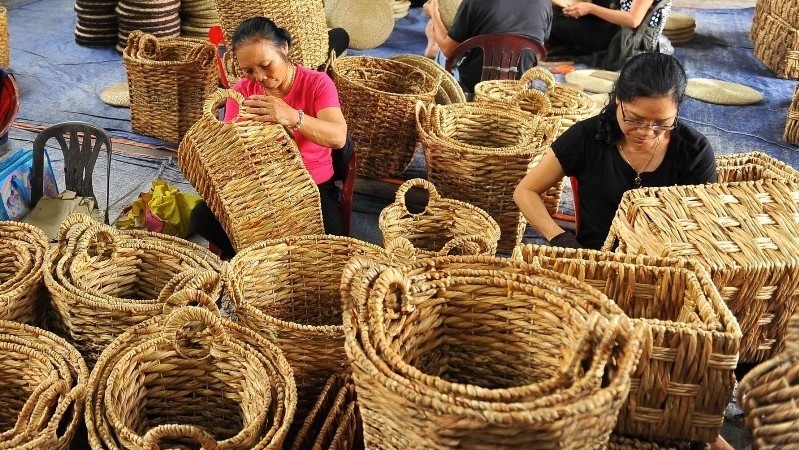Annual export turnover increased by 9.5%
According to a report from the Ministry of Industry and Trade, the export turnover of Vietnamese handicrafts increased by 9.5% per year during the 2015-2019 period, from US$1.62 billion in 2015 to US$2.23 billion in 2019. The US is the largest consumer market of Vietnamese handicraft products (with sales accounting for 35% of the annual export turnover). Other major import markets are Japan, EU (especially Germany, the UK, France and the Netherlands), Australia and the Republic of Korea (RoK).
Export were mainly bags, purses, suitcases, hats, umbrellas; toysand sports equipment; ceramics; rattan, bamboo and sedge products, carpets and wooden handicrafts. In addition, many fashion items and gifts have been exported on the spot through services for foreign visitors to Vietnam, accounting for around 15% of total spending (around US$15 per guest). However, Vietnam's spot export market has not been strategically focused over recent years.
According to statistics from the Vietnam Handicraft Exporters Association (VIETCRAFT), US$1 million from handicraft exports brings about 5-10 times higher profits than the mining industry and creates jobs for around 3,000-5,000 workers. In addition, the export turnover of this commodity creates huge added value and it is considered a key industry to focus on exports in the coming years.
Basic foundations needed in accordance with market requirements
The Comprehensive and Progressive Agreement for Trans-Pacific Partnership (CPTPP) and EU – Vietnam Free Trade Agreement (EVFTA) have opened up great opportunities for the handicraft industry, especially as Vietnam is emerging as a safe destination following the Government’s success in controlling the epidemic.
Deputy Country Representative of the Asia Foundation in Vietnam, Filip Graovac, said that Vietnam has great potential in terms of the export of handicraft and agricultural products as well as possessing good products and responsible manufacturers.The problem is how to present these factors to buyers across borders.
Consumers have been also increasingly concerned about environmental and social issues, especially those related to the origin and legality of raw materials, labour practices, workers’ safety and health and friendly environmental production methods. Handicraft products from recycled materials and fair trade market channels are forecast to develop in the near future. However, Filip Graovac noted that Vietnamese people have not applied well the traceability of goods, although they are quite sensitive in business.
Vice Chairman of VIETCRAFT, Le Ba Ngoc, said thattraceability is a challenge for the growth of the handicraft sector which has around 1.5 million labourers and brings export turnover of around US$1.7 billion per year.
In addition, many comments affirm that despite its great potential, Vietnam’s handicraft sector faces many outstanding problems. The production scale is still small and there is lack of linkage in the value chain. Training in basic techniques, innovative design ideas and the development of new products are still limited. Notably, requirements of international standard conformity are increasing; meanwhile, there are very few enterprises that can meet all international standards.
Although handicrafts are not an essential commodity in a developed society, demand for decorative products has increased. Handicraft consumption is very large (over US$100 billion), but Vietnam only accounts for over 2%. Therefore, the room for this sector’s development is huge. Le Ba Ngoc asked the enterprises to equip basic foundations in accordance with market requirements, including traceability, to grasp market opportunities.
The process of Vietnam's international economic integration opens up many opportunities and challenges for handicraft businesses in Vietnam. Therefore, the relevant agencies should define the strategic direction of handicraft exports during the 2021-2025 period so that Vietnamese handicraft products can reach the world.
The Ministry of Industry and Trade will focus on improving the export capacity and value chain of Vietnam's handicrafts on the basis of focusing on products with competitive advantages, increasing their value and enhancing their conformity withinternational standards in many different market segments,especially middle and high-end ones. It is crucial to strengthencohesion and build the industry’s brand in association with trade promotion and sustainable development to enhance competitiveness on a regional level, towards an export turnover of US$5 billion by 2025.
















